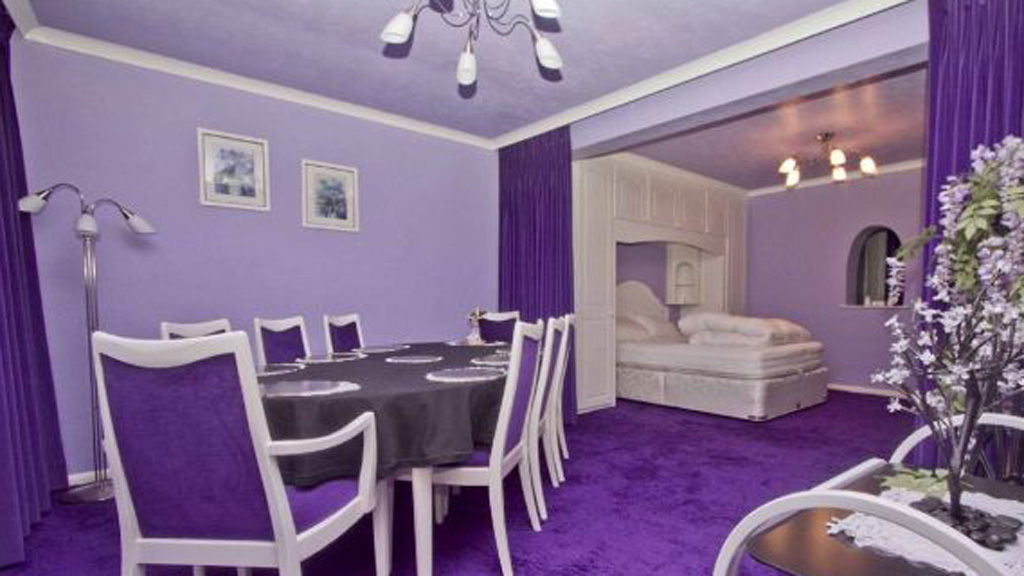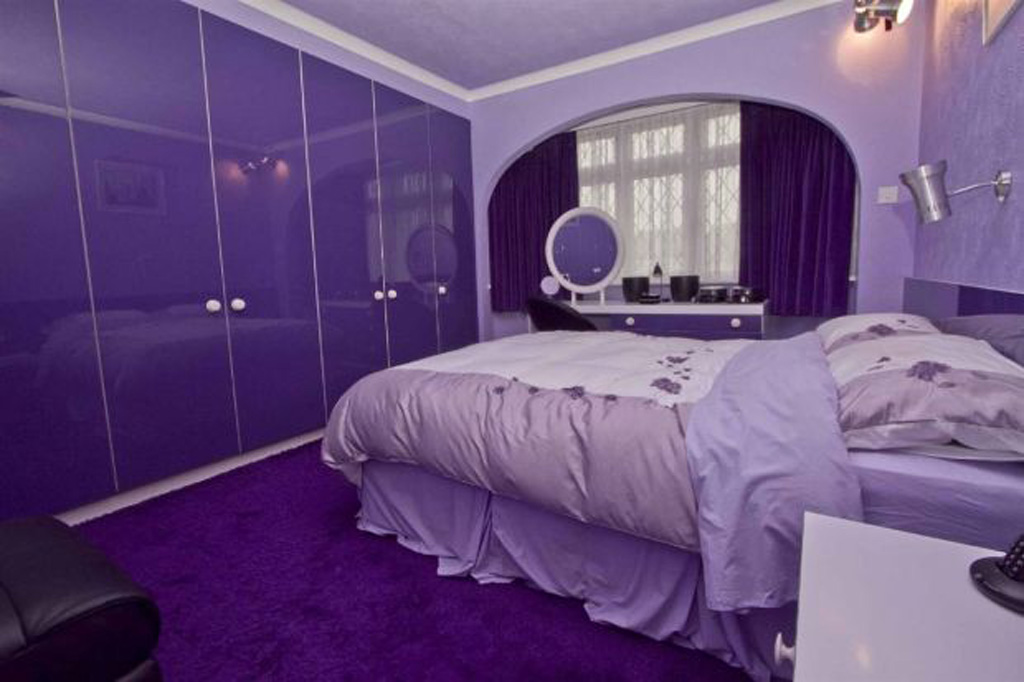The colour purple: the house licked by Cadbury?
Nicknamed “the most purple house in Britain”, is this four-bed semi touched by the palette of the UK’s best-known chocolate brand?

This home in Hillingdon, Middlesex, is advertised by Rightmove as a “sought after address” with a “family-inspired design” and a “particularly impressive” garden. Strangely, there is no mention of the colour purple.
The estate agent told Channel 4 News simply that there had been “lots of interest” so far, with several viewings, but that the current owner “did not wish to be involved” in any speculation about the property’s unusual colour scheme.

But then rumour in the design world suggested the main colour (the carpets and living room walls) is in fact “Pantone 2685c purple” – better known as Cadbury’s purple. And that is not just any purple – years of legal wrangling recently came to a sticky end for the chocolate brand which tried and failed to secure exclusive rights to it on packaging.
Angus Montgomery, editor of Design Week, who covered the case, explained that Nestlé had successfully appealed against a ruling which means Cadbury is unable to register exclusive trademark rights to the colour.
So what does that mean for a house in Hillingdon?
“There’s nothing to stop you from painting your house Cadbury purple,” said Montgomery, adding that the legal battle only concerned chocolate packaging and not scatter cushions or bathroom mats.
“But to be certain it is indeed Pantone 2685c you’d have to go to the house.”

Right mauve
London-based interior designer Julian Land agrees.
“You would have to be in the room to really know. It’s all about the combination of red and blue.
“There is an infinite variety of colour across the spectrum, whether you’re talking mauve, lavender or aubergine.
“And of course purple has a lot of regal and ecclesiastical overtones – it’s a very symbolic colour in terms of power.”

Purple patch
“Royal purple”, sometimes called “Byzantine purple”, was originally derived from whelks, the marine mollusc. The creature’s yellow mucus turned to a stable purple when exposed to sunlight, making it a very strong dye.
It was first discovered in Lebanon by rich Romans who used the pigment to create “elite” clothing.
In the Middle Ages the same dye was used for illuminated manuscripts.
“It was a successful dye and therefore was popular with the wealthy,” added Land.
“To create it now, as a paint, you would use a spectrometer to get a CMYK breakdown. That would go into a mixing machine – they would add cyan, magenta and so on to get to your colour.”
Cadbury is investigating its colour swatches on our behalf. The postcode for the house is listed on the Rightmove website as UB10 (A on the map below), while the postcode for the UK headquarters of Mondelez International, which owns Cadbury’s, is UB81DH – less than two miles away (B on the map below).
And if you fancy a home poised between Roman splendour and Willy Wonka’s downstairs loo, it’s yours for £400,000.
(Pictures courtesy of Rightmove.com)






